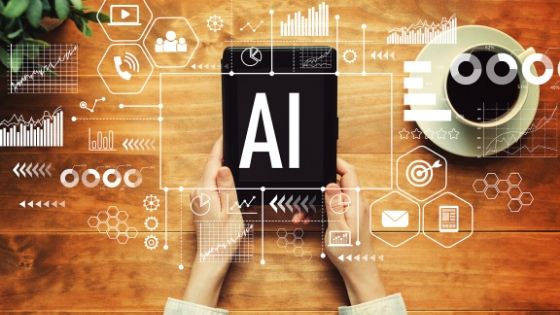If you dabble in IT, you must have come across or heard of the concept of deep learning. Deep learning has always been around; for as long as artificial intelligence has been a subject; not many people understand quite how the technology works or how it is applied.


Deep learning was thrust into the limelight back in 2016 when Google’s AlpahGo software, which was based on deep learning systems, beat the world AlphaGo champion. Since then, deep learning has been a well-discussed subject, appearing in numerous tech blogs, news reports, and forums. As this demand is surging, students are now looking for online courses to improve their skills. The highest demand is for a deep learning course in Hyderabad, followed by Bangalore, Delhi and Mumbai.
In the last 10 years or so, the field of deep learning has seen revolutionary developments allowing computers and machines to carry out tasks that were previously reserved for human beings.
But what exactly is it? Defining Deep learning
To put it plainly, artificial intelligence involves teaching machines to carry out tasks that would ordinarily require human intelligence. There are many concepts of artificial intelligence including machine learning. Machine learning is where machines learn to acquire certain skills through experience without human intervention.
Deep learning is a subset of machine learning. This machine learning technique is the technology behind so many AI innovations such as driverless cars. It is because of deep learning that driverless cars can stop whenever they see a stop sign, a pedestrian, or an object in the way.
Deep learning is also the technology that’s behind the voice control feature on your TV, phone, or speaker. Because deep learning applications have increased considerably in the past couple of years, the concept is garnering a lot of attention- and deservedly so.
For deep learning to occur, a computer learns to perform routine tasks directly from videos, text, or sound. Deep learning models are so complex that they can attain a state of the art precision, sometimes even exceeding human capability or performance. Deep learning systems are typically trained using a large collection of labeled data as well as a neural network architecture that consists of numerous layers.
Why does deep learning attain such impressive results?
The best books on artificial intelligence (good roundup here) sum it down to one word; precision. Deep learning attains such amazing results because of its accuracy. Safety-critical AI applications such as driverless cars would basically be a nightmare without deep learning techniques.
Although the idea of deep learning was first theorized back in the 80s, it only became useful or applicable recently largely because:
For deep learning to occur, large amounts of labeled data must be available. For instance, autonomous vehicles rely on millions of images and countless hours of video to learn how to drive independently.
It also requires considerable computing power, which was limited in the past. Today, we have access to high-performance GPUs that contain a parallel structure conducive to deep learning.
This combined with cloud computing allows development teams to work faster and more efficiently which reduces training time for a deep learning network from months to weeks or even hours in some instances.
How does it work?
The majority of the deep learning methods available rely on neural network architectures. This explains why deep learning models are commonly referred to as deep neural networks. The phrase-deep is typically used to refer to the number of hidden layers in a neural network.
Traditional neural networks only contain 2 to 3 hidden layers while neural networks can have as many as 150 hidden layers. As mentioned earlier, deep learning models learn through large sets of labeled data and neural network architectures that learn directly from the data without needing any human interaction or intervention.
One of the most popular varieties of neural networks is a CNN or a convolution neural network. CNN or ConvNet is a deep learning algorithm that can take in an input image, assign value to an array of aspects or objects in the image to be able to differentiate it from another image.
Deep learning is important because it allows machines to solve challenging problems even when exposed to a diverse set of data, whether it is unstructured or interconnected. The more data a deep learning algorithm can learn, the better it can perform.
Examples of deep learning at work
Driverless cars:
Driverless cars use deep learning technology to automatically detect objects and obstacles such as stop signs as well as traffic lights. It is also utilized for detecting pedestrians, which is how driverless cars can drive without so many fatalities.
Medical research
Cancer research teams have been using deep learning to automatically detect cancer cells. When it comes to deep learning, the more data the better. Luckily, the medical field is sitting on a whole of data that could be utilized for deep learning to identify diseases easily, improve diagnosis, offer patients customized treatments that are paired with predictive analysis, aid drug manufacturing, and discovery, and so much more.
Aerospace and defense
NASA has been utilizing deep learning to identify objects from satellites while defense departments all over the world utilize the technology to identify safe or unsafe areas for their troops.
Industrial automation
Deep learning is used to improve safety conditions in factories and industrial plants that often feature the use of heavy machinery. Deep learning technology is used to automatically detect whenever objects or people are within unsafe distances so that precautionary measures can be implemented.
Final Words
In the last few years, there has been a lot of debate surrounding AI, machine learning, and robot takeover. Machine learning provides us with countless possibilities that could impact the way we live, socialize, and conduct business.
While technology is evolving- at an alarmingly fast rate might we add-there are fears and excitement surrounding this technology. The terms machine learning, artificial intelligence, and deep learning may sound strange and unfamiliar to many, but these concepts are already being applied in day to day tasks and activities. We hope that this simple and basic guide will help you understand just what deep learning is and its place in society.


























